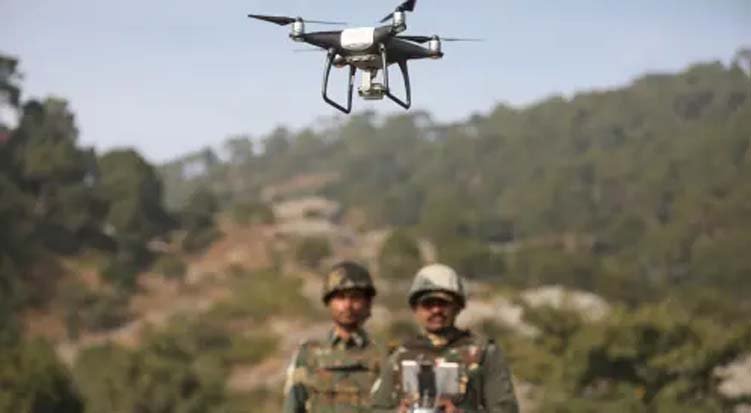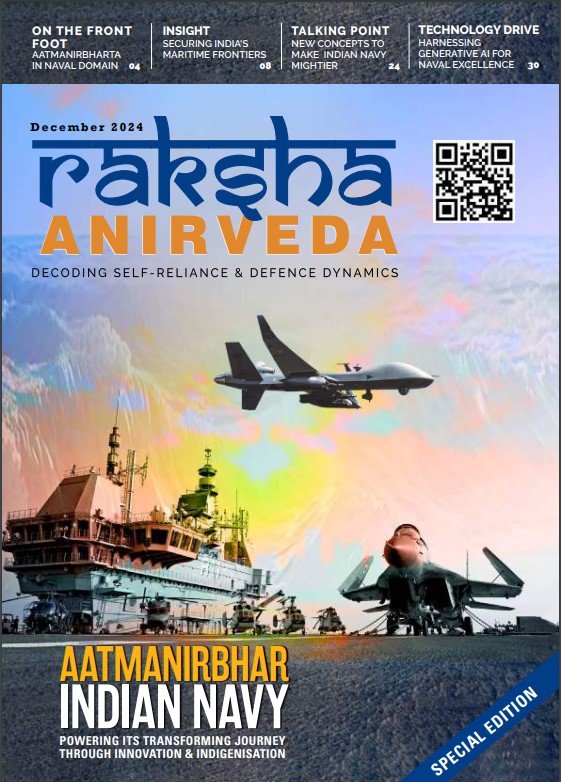The recent conflict between India and Pakistan, which alarmingly escalated before both countries decided to pause the operations, presents a compelling case study on how warfare is evolving in the age of unmanned aerial systems. At its core lies a troubling question: did drones push us into a conflict that, under older paradigms of deterrence and red lines, might have been avoided?
India’s precise strike on terrorist infrastructure in Pakistan and Pakistan occupied Kashmir (PoK) was a proportional response to repeated provocations. In the traditional military playbook, any retaliatory act involving crossing international boundaries – by troops or manned aircraft – are seen as a grave provocation, bordering on an act of war.
Historically, such steps would involve serious deliberation, as the costs – political, military, economic, and diplomatic – would be high, particularly between nuclear-armed neighbours.
The recent conflict between India and Pakistan, which alarmingly escalated before both countries decided to pause the operations, presents a compelling case study on how warfare is evolving in the age of unmanned aerial systems. At its core lies a troubling question: did drones push us into a conflict that, under older paradigms of deterrence and red lines, might have been avoided?
However, in this instance, Pakistan avoided such conventional means and instead launched waves of armed drones – cheap, unmanned, and ostensibly deniable. This allowed them to threaten to strike military installations and civilian areas without incurring the risk or cost of deploying personnel across the border.
Drones: The New Calculus of Conflict
Drones have changed the cost-benefit equation of a conflict. They are inexpensive, scalable, and do not risk human life. For a nation with limited resources and global diplomatic pressure, drones provide a seemingly ‘low-risk’ tool to apply pressure, punish, and provoke. But therein lies the danger: the ease of use and perceived deniability of drones lower the threshold for escalation, making it more tempting for leaders to resort to them early in a crisis.
This shift directly affects a leader’s decision-making process. In a conventional scenario, the leader weighs the potential for direct confrontation, global condemnation, and loss of life. Every order to cross a border or launch a manned strike is laden with strategic gravity.
The escalatory ladder is visible, steep, and fraught with consequences. But with drones, this clarity blurs. The leader now assesses a new matrix: can we inflict damage while staying below the adversary’s red line? Can we provoke without inviting full retaliation? Can we demonstrate resolve to domestic and military audiences while retaining a façade of restraint internationally?
Thus, a leader’s calculus shifts from “Should we escalate?” to “How much can we get away with, before triggering a major response?”
Drones provide a seemingly ‘low-risk’ tool to apply pressure, punish, and provoke. But therein lies the danger: the ease of use and perceived deniability of drones lower the threshold for escalation, making it more tempting for leaders to resort to them early in a crisis
Psychological and Strategic Impact
Drones aren’t just weapons; they are instruments of psychological warfare. Swarms of them, especially when aimed at civilian areas, cause panic and disorder. They strike not just targets, but the public psyche – spreading fear, confusion, and often misinformation. For an adversary, this is a strategic advantage: to shape the battlefield not just with firepower but with psychological perception.
For political and military leadership, this changes the nature of warfare. The question is no longer confined to military objectives alone; it extends to media optics, civilian morale, international perception, and domestic political pressure. This multidimensional impact complicates decision-making further, forcing leaders to account for a wider spectrum of variables in real time.
Redefining Red Lines
The foundational premise of deterrence has always rested on clarity – of thresholds, responses, and consequences. But drone warfare muddies this clarity. Is an armed drone incursion equivalent to a missile strike? How many drones constitute a serious provocation? At what point does escalation merit a full-spectrum military response?
India responded swiftly and decisively to the drone and missile attacks with its own calibrated use of drones and precision missile strikes. The response was measured and proportionate, reflecting strategic maturity and restraint.
However, the situation carried a real risk of escalation. The absence of clearly articulated red lines – particularly with respect to unmanned aerial systems – creates dangerous ambiguity that can be exploited by adversaries.
The escalatory ladder is visible, steep, and fraught with consequences. But with drones, this clarity blurs. The leader now assesses a new matrix: can we inflict damage while staying below the adversary’s red line? Can we provoke without inviting full retaliation? Can we demonstrate resolve to domestic and military audiences while retaining a façade of restraint internationally?
Going forward, India must revisit and refine its definitions of aggression in the context of emerging technologies. The security doctrine should unambiguously state how coordinated drone incursions – especially armed and reconnaissance ones – will be viewed, and what thresholds will invoke specific retaliatory measures.
Such clarity is essential not only to deter any future adventurism but also to empower leadership with a well-defined framework for response.

Lessons from Kargil: Would Drones Have Made a Difference?
This evolving challenge is best understood when viewed through the lens of past conflicts. During the 1999 Kargil War, India exercised remarkable restraint by choosing not to cross the Line of Control, despite Pakistani intrusions into the Indian territory.
This deliberate decision to confine military action within our side of the LoC was rooted in a careful political-military calculation – avoiding escalation, limiting international fallout, and adhering to a rules-based conduct of war.
However, had drones of today’s sophistication been available then, the dynamics might have shifted considerably. Precision drone strikes could have provided real-time intelligence, surgical firepower, and the ability to target enemy logistics and troop concentrations at high altitudes – without risking pilot lives or violating the LoC.
The recent crisis was not just another chapter in Indo-Pak tensions; it is a case study in the dangers of underestimating the strategic impact of new technologies. Drones, while tactically efficient, are strategically destabilising. They offer a false sense of control and deniability that can, paradoxically, transform into a war more likely – especially between nuclear powers
Such capabilities may have enabled faster neutralisation of intrusions with minimal escalation, while still adhering to strategic restraint. This thought experiment underlines the dual-edged nature of drones – they offer strategic options, but also tempt early use, potentially altering the escalatory ladder.
Hence, while drones today offer new tools for measured response, their use must be embedded within a robust framework of doctrine, red lines, and political prudence -something India practiced with distinction during Kargil and must now adapt in the drone era, too.
The Urgent Need for Strategic Recalibration
The recent crisis was not just another chapter in Indo-Pak tensions; it is a case study in the dangers of underestimating the strategic impact of new technologies. Drones, while tactically efficient, are strategically destabilising. They offer a false sense of control and deniability that can, paradoxically, transform into a war more likely – especially between nuclear powers.
Going forward, India must lead the conversation in redefining acts of aggression in the drone era. We must recalibrate our doctrines, clearly communicate our thresholds, and prepare our leaders to make decisions in this new domain – where escalation can be rapid, perception can be manipulated, and the cost of inaction may rival that of action.
The writer is an Indian Army veteran and expert in Operations Research and Systems Analysis






